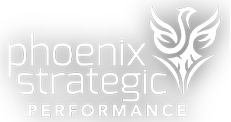Recently, organizations have had to adapt to a new operating environment in response to the pandemic. As you think about how you have had to adapt by instituting remote work, extended sick leave, and complying with new regulations, think about how these changes may have impacted your organization's health.
It would not be unusual for your organization to have reverted to Maslow’s survival mode. And even though you may think that everything is OK, take a candid look at how you would rate the current organizational health of your group, division, or company. And as you look to the future, how do you plan for an organizationally healthy group that starts healthy and stays healthy throughout the year? And, if you need to repair some organizational health issues, what will you do?
What do we mean by organizational health? Health is a relatively simple concept. On a personal level, we use many terms to describe health. The positive terms are robust, energetic, improving, strong, and vibrant. On the less than positive side, the terms are lethargic, sick, failing, deteriorating, and declining. These same terms apply to organizational groups. That's why the term organizational health resonates with managers. It reflects the total dynamic impact of all the individuals' interactions and contributions within each group.
What should you do to assess the organizational health of your group?
(Keep in mind that your managerial mindset needs to be totally objective & completely honest.)
Here is a 3-part checklist that may help you evaluate, build, and sustain organizational health.
Part 1: Planning Phase: In Ideal Terms, Rank and Prioritize the Individual Tasks Requirements for Each Job? Has the Job Changed in Response to Business Changes?
By doing this, you have now created your objective benchmark. This is your starting point – your focused ideal. This is what robust looks like in organizational health terms, giving you a clear picture or vision.
Risk: Many managers get lost during this phase. They think about what the employee has chosen to do rather than consider what the employee has been hired to do. The job morphs into the person rather than the person morphing into the job. The benchmark can easily become distorted.
Part 2: Assessing Phase: Conduct an Honest Employee Assessment Against the Benchmark - Has There Been Slippage?
Now that the benchmark has been determined, you start by honestly assessing each person on your team against their individual job benchmark. By remaining honest to the benchmark, you evaluate employees against the real benchmark of the job, not the part of the job employees have chosen to do. This may be a reality check. Remain honest to the benchmark, no matter how difficult, or you will introduce systemic flaws into your assessment process, and you will have violated Part 1.
Evaluate your entire team. Be sure to account for heavily weighted, prioritized tasks. This information will create focus.
Risk: Anything done from this point onward, if it is not honest, will be subjectively flawed with errors.
Part 3: Implementation Phase: Create an Organizational Snapshot – Make Sure Your Organization Is Staying Current and Relevant
Organize the accumulated individual and team task assessments to create a current organizational snapshot. The organizational snapshot will tell you where you are now and where you need to go. Using organizational health terminology, you can determine if your group is robust or lethargic. Are parts of your group robust while others limp along? What will the ‘lag and drag effect’ of the lethargic have on the more robust members of your team? Thinking in terms of organizational health can help you see the current group dynamics of your team.
Just like personal health changes, so does organizational health. As a manager, it’s your job to get your group healthy and keep it that way. It is also important for you to be continually mindful of when individual changes occur. Organizational health is a continually changing dynamic state.
Risk: Organizational health must be continually monitored and adjusted. Managers must have an implementation plan to move their group to a healthy status and a plan to make continual adjustments when necessary! Beware, if you take your eye off of the organizational health, prepare for unhealthy times.
Do you want to stay updated on other tips to help you achieve organizational agility? Subscribe to our blog to get updates directly in your inbox!





